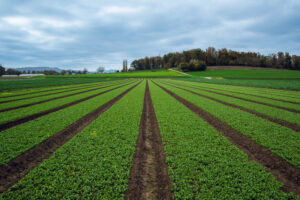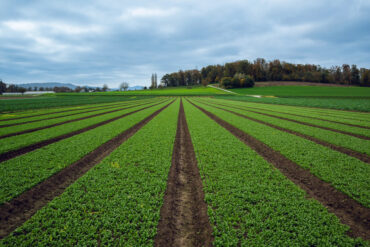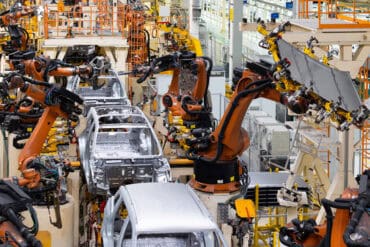
With real-time visibility of what’s happening in their fields, farmers can use data to plant more precisely and set their seeds up for a healthy growing season.
Remember the days when bulky cameras were loaded with rolls of 35mm film? You’d point and shoot, hoping the photo turned out okay. Then, after waiting weeks to develop the film, you’d find out that Grandma had blinked. Because you couldn’t see the image in real time, you lost your chance to capture a great family photo.
Farmers likewise cannot afford to take a “wait-and-see” approach to planting, where time is limited and the consequences of making a mistake are much higher. Timing is of the essence.
Each year, farmers only get one chance to produce the best possible crop to provide the food, fuel, and clothes the global population depends on. And the stakes are high, as the United Nations estimates that the global population will reach 9.8 billion people by 2050. This means that food production will need to increase by 70% by 2050. The challenges are immense, as farmers face both longstanding and new challenges, including unpredictable weather, complicated and time-sensitive decision making, and a shrinking labor pool.
With advanced technology, farmers can replace the “wait-and-see” approach to planting with one that is far more precise and efficient. Modern tools enable farmers to automate the entire planting process, monitor it in real time, identify opportunities in the moment to make adjustments, and leave the field confident they’ve given each seed the best chance of growing into a healthy plant.
See also: The Path Towards Efficient, Profitable, and Safe Autonomous Agriculture
Preparing for the Planting Season
The average farm is the size of 4,000 football fields and can have over 750 million plants that need precise care.
Before planting their fields, farmers must wait for the soil to become warm enough, but they can’t wait too long, or there won’t be enough time for the seeds to grow in time for harvest. Farmers in the Midwest may have only a 10-day window to get seeds in the ground – any deviation from that makes it likely they will lose money on their crops.
Once it is time to plant, farmers have to work quickly and with great precision to give each of their millions of seeds the best chance at success. The seeds need to be evenly spaced from one another across multiple fields, and the seeds need to be planted at identical and precise depths so the plants emerge together.
In the past, farmers had to physically step out of the cab to look over their work and try to spot potential errors or other problems. Now, thanks to advanced planters with cameras and in-cab display technology, farmers have eyes in places they’ve never had before.
Advanced Technology Takes on the Planting Season
Long before seeds enter the ground, the latest technology helps farmers ensure their seeds are planted in optimal ways. Farmers and their advisors analyze data from past years, including evaluating precisely where seeds have flourished and where they’ve languished. The resulting plans include prescription maps with augmented field boundaries and guidance lines that tell the farmer how many seeds should be planted on each part of every field and direct the machines to the exact areas they should be
Throughout the planting process, high-tech planters – equipped with robotics, sensors, and camera vision – traverse the fields and place seeds in the ground. The massive machines span about 60 feet wide and have 24 rows units (or robots), each in charge of planting seeds over the course of a field. Each row unit allows farmers to individually address each seed’s unique needs across the entire farm with extreme precision.
With on-machine connectivity and a GPS network, a row unit knows exactly where to place hundreds of seeds per second, as well as the optimal depth and spacing, when to apply fertilizer, and when to cover the seed with soil. A sensor on the row registers when each seed is going into the ground, and a robot sprays only the amount of fertilizer needed directly onto the seed – all in a fraction of a second. The sensor is constantly reading the seeding rate, spacing, and a row units’ consistency to inform the planter if it is maintaining the planting at the correct depth. Automating this process saves time, improves results, and reduces the amount of greenhouse gases used in agriculture.
For enhanced monitoring, the row units are equipped with lasers that measure seed depth, while cameras provide real-time visuals of the soil to the farmer’s in-cab display. Should debris like residue from a previous crop get in the way of a seed, farmers can adjust the planter from the cab in real time.
Empowering Farmers to Take Action
Enabling real-time decision making through robotics, camera vision, sensors, and other technologies empowers farmers, who no longer have to “wait and see” how the growing season will progress. With real-time visibility of what’s happening in their fields, farmers can use data to plant more precisely and set their seeds up for a healthy growing season.
As technology continues to advance, it has the potential to forge a path toward a more efficient and productive future of farming – one that will enable us to meet the food, fuel, and clothing demands of our rapidly growing population.



























